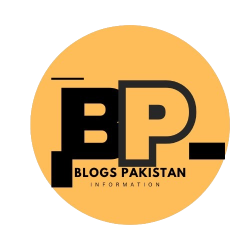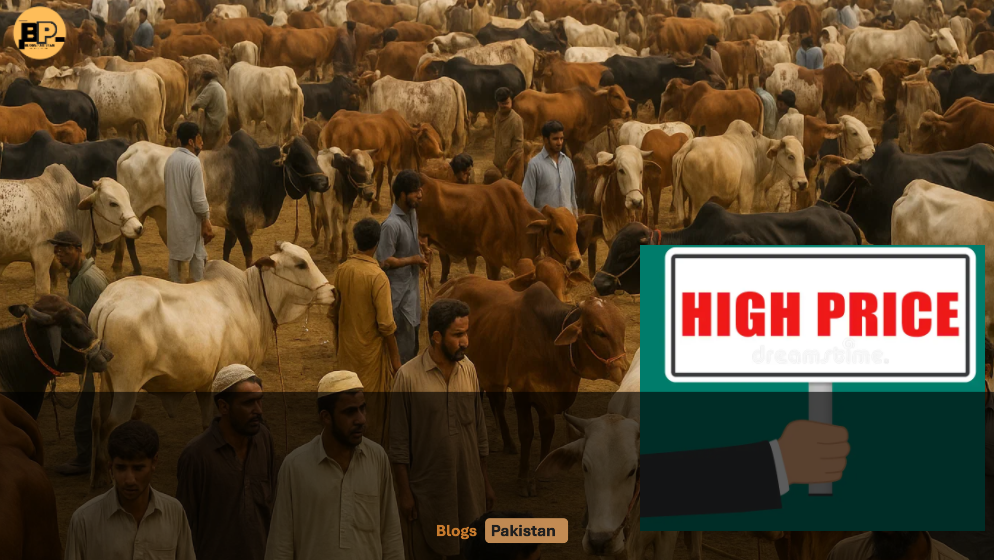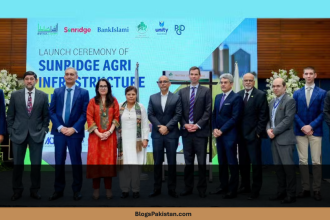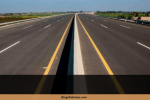The Spirit of Sacrifice Meets Economic Reality
As the moon of Zul-Hijjah has been officially sighted, anticipation builds across Pakistan for Eid ul Adha 2025, which will be celebrated on June 7. Known as the Festival of Sacrifice, Eid ul Adha commemorates Prophet Ibrahim’s willingness to sacrifice in obedience to Allah. For Muslims, this sacred occasion is marked by offering sacrificial animals like cows, goats, and camels, distributing meat among family, friends, and the needy.
But this year, as families prepare to fulfill this spiritual obligation, many are being forced to confront a different kind of sacrifice — their budgets.
Cattle Markets Across Pakistan: A Price Shockwave
Sticker Shock in Karachi, Lahore, Islamabad
From the bustling cattle markets in Karachi’s Sohrab Goth to the livestock centers of Lahore’s Shahpur Kanjran and Islamabad’s Bhara Kahu, the sentiment is shared: sacrificial animal prices are through the roof.
Families entering markets with carefully planned budgets are returning home empty-handed or frustrated. A visitor to a market in Lahore remarked,
“We had a specific budget for a goat, but the prices are way beyond what we expected. It’s impossible for an average family now.”
What was once a moment of joy and preparation has become, for many, a financial strain.
Why Are Prices So High This Year?
Traders Point to Inflation and Logistics
According to traders, this surge in prices is not arbitrary. They cite multiple contributing factors:
- Inflation on Eid ul Adha: The general rise in prices across the economy has impacted everything from animal feed to veterinary services.
- Transport Costs: Fuel price hikes have driven up the cost of bringing animals from rural farms to urban centers.
- Animal Rearing Expenses: Livestock owners report spending an entire year raising these animals, and say they cannot afford to sell them at losses.
One trader in Arifwala shared,
“We raised these animals for twelve months, feeding and caring for them. If we sell at reduced prices, we lose all our effort and investment.”
From their perspective, the prices reflect real economic pressure, not profiteering.
Buyers Feel Left Out of the Tradition
Financial Burden on Middle-Class Families
While traders argue for fairness in pricing, many buyers feel excluded from religious participation due to the unaffordability.
For countless middle- and lower-income families, sacrificial rites are becoming increasingly difficult. Buying even a small goat can cost double or triple what it did just a few years ago. Group sacrifices, especially for cows, are now more common as people join hands to manage the expense.
A father of three in Karachi lamented,
“My children keep asking when we’ll bring our goat home, but I’m not sure we can afford one this year.”
The Struggle to Find Middle Ground
A Standoff Between Buyers and Sellers
With both parties holding firm to their positions, Pakistan’s cattle markets have turned into negotiation battlefields. Buyers hope for last-minute price drops, while sellers insist on holding their ground.
In some markets, potential customers are waiting until the final days of Eid ul Adha, hoping traders will be forced to reduce prices. However, this strategy comes with the risk of limited selection and fewer healthy animals.
Traders, on the other hand, are banking on bulk sales or wealthier buyers willing to pay premium prices.
The Broader Economic Picture
Inflation’s Ripple Effects
This situation is not happening in a vacuum. Pakistan is currently facing:
- High food inflation
- Currency devaluation
- Unstable fuel prices
- A shrinking middle class
These challenges impact every layer of society — and the effects are especially visible in religious and cultural observances, like Eid ul Adha.
What used to be a symbol of joy and communal sharing is, for many, becoming a source of stress and exclusion.
Digital Marketplaces and Online Qurbani Options
A Shift Toward Convenience and Cost-Efficiency
In response to rising prices and chaotic markets, many Pakistanis are turning to online Qurbani platforms. These services offer:
- Transparent pricing
- Guaranteed halal slaughter
- Hassle-free delivery or meat distribution to charity
Platforms like BakraOnline, Qurbani App, and Daraz Livestock are gaining traction, particularly among urban families looking for stress-free alternatives.
While these services might not offer the traditional market experience, they alleviate logistical and financial burdens for many.
Religious Perspective: Quality Over Quantity
Islam Encourages Ease, Not Hardship
It’s important to remember the religious essence of Eid ul Adha. The act of sacrifice is meant to demonstrate faith, not to induce financial hardship.
Islamic scholars emphasize:
- The sacrifice should be made within your means
- Intentions matter more than animal size or cost
- It is better to perform a small, sincere sacrifice than to struggle for an expensive one
This reminder is especially relevant in times of economic difficulty, where spiritual sincerity should outweigh social display.
Conclusion: Eid ul Adha in the Era of Economic Pressure
As Eid ul Adha 2025 draws closer, Pakistan’s cattle markets are brimming with emotion — excitement, frustration, negotiation, and hope. The rising cost of sacrificial animals has turned a deeply spiritual tradition into a financial puzzle for many.
Still, amidst the chaos, the essence of the festival remains intact. Whether through shared sacrifices, online services, or humble offerings, the spirit of giving, gratitude, and devotion continues to thrive.
This Eid ul Adha, let’s remember: the true sacrifice lies not in the cost, but in the intention behind the act.









